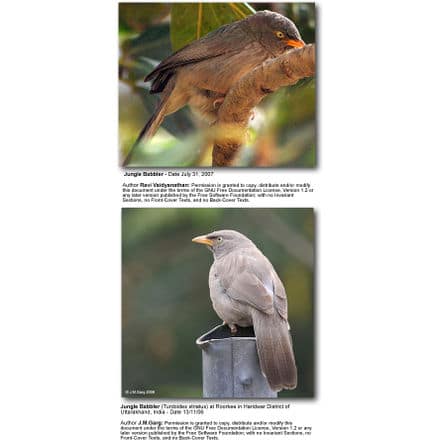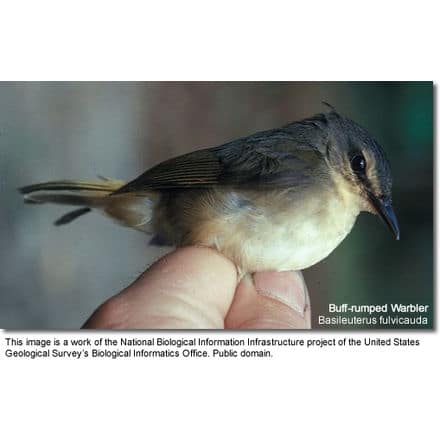Jungle Babblers, Turdoides striata
The Jungle Babblers, Turdoides striata, is an Old World babbler. The Old World babblers are a large family of Old World passerine birds characterised by soft fluffy plumage. These are birds of tropical areas, with the greatest variety in southeast Asia.
The Jungle Babbler is a resident breeding bird in India and Pakistan. In the past, the Orange-billed Babbler, Turdoides rufescens, of Sri Lanka was considered to be a race of this babbler but is now normally given full species status.
The Jungle Babblers habitat is forest and cultivation. This species, like most babblers, is not migratory and has short rounded wings and a weak flight.
It is quite common in Indian forests It builds its nest in a tree, concealed in dense masses of foliage. The normal clutch is two to six deep greenish-blue eggs.
These birds are grey-brown below, with some mottling on the throat and breast. The upperparts are a slightly darker shade. The head is grey, and the bill is yellow. The race T. s. somervillei of Maharastra has an orange tail and dark primary flight feathers.
The Jungle Babbler lives in flocks of seven to ten or more. It is a noisy bird, and the presence of a flock may generally be known at some distance by the harsh mewing calls, continual chattering, squeaking and chirping produced by its members. It feeds mainly on insects, but also eats nectar and berries.
Frank Finn notes
Some years back, a new Viceroy was being shown the wonders of his temporary kingdom, and among these the Taj at Agra held, of course, an important place. Arrived before the glorious monument of Eastern love and pride, the artless Aide-de-Camp was mute ; the gilded staff were still as Kipling says, in anxious expectation of the comment of His Excellency. But this, alas when it came was merely the remark: “What are those funny little birds ? The shock must have been the greater for the fact that the mean fowls thus honoured were it seems, of that singularly disreputable species which is commonly known in India as the “Seven Sisters” or “Seven Brothers,” or by the Hindustani equivalent of sat-bhai.[1]
Notes
- Frank Finn (1904) The Birds of Calcutta. Thacker, Spink and Co.
Copyright: Wikipedia. This article is licensed under the GNU Free Documentation License. It uses material from Wikipedia.org… Additional information and photos added by Avianweb.
Please Note: The articles or images on this page are the sole property of the authors or photographers. Please contact them directly with respect to any copyright or licensing questions. Thank you.




